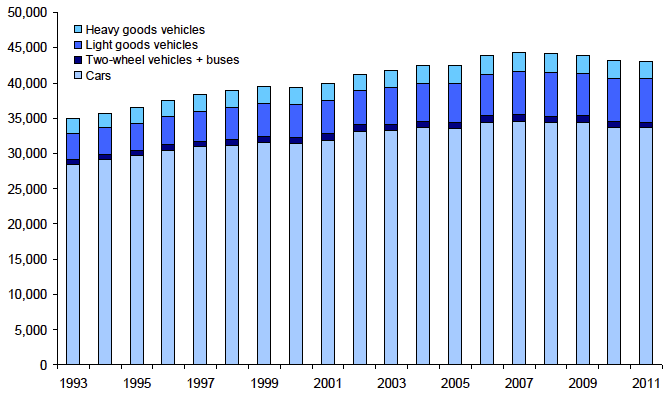Key Scottish Environment Statistics 2012
This publication aims to provide an easily accessible reference document which offers information on a wide range of environmental topics. It covers key datasets on the state of the environment in Scotland, with an emphasis on the trends over time wherever possible.
This document is part of a collection
Motor Traffic on All Roads: 1993-2011
Million vehicle kilometres

The pollutants emitted by road transport contribute greatly to poor air quality that damages human and ecosystem health. Fine particulate matter and nitrogen dioxide (NO2) are the pollutants of most concern, due primarily to their effects on human health. Oxides of nitrogen (NOx), of which NO2 is a component, contribute to the formation of ozone that can impact on both human health and plant growth. Transport emissions also contain carbon dioxide and other greenhouse gases (GHGs), which contribute to climate change. A reduction in the volume of road traffic would help to achieve reductions in GHG emissions and concentrations of atmospheric pollutants.
Since 1993, the volume of motor traffic on roads in Scotland has increased by 23% to some 43.1 billion vehicle kilometres in 2011. However, since 2007 there has been a reduction in motorised road traffic with 2011 levels 3% less than the peak in 2007. In 2011, major roads (motorways and 'A' roads) accounted for 66% of the volume of motor traffic in Scotland. In addition, minor roads ('B', 'C' and unclassified) accounted for 15 billion vehicle kilometres of traffic. Much of the growth in road traffic has been by light goods vehicles, which showed a 70% increase in vehicle kilometres since 1993.
Source: Department for Transport / Metadata
Contact
Email: Sandy McPhee
There is a problem
Thanks for your feedback